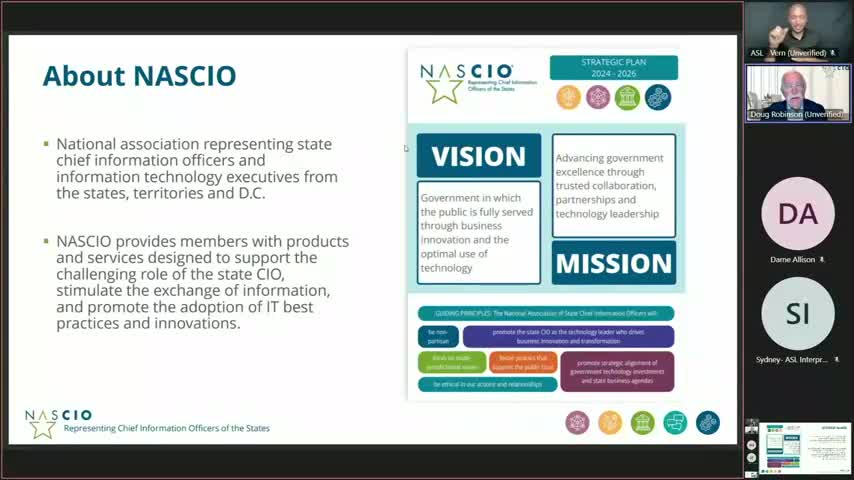State CIOs outline priorities for IT modernization and funding strategies
April 04, 2025 | Information Management and Technology, Joint, Committees, Legislative, Oregon
Thanks to Scribe from Workplace AI , all articles about Oregon are free for you to enjoy throughout 2025!

This article was created by AI using a video recording of the meeting. It summarizes the key points discussed, but for full details and context, please refer to the video of the full meeting. Link to Full Meeting
The session opened with a historical overview of the organization, which has been advocating for state CIOs since 1969. The focus quickly shifted to the critical areas of cybersecurity and digital services, which are now seen as essential drivers for modernization. As the discussion unfolded, it became clear that many states are grappling with the need to transition to cloud services and managed solutions, a journey that requires careful planning and significant funding.
A key point of discussion was the funding model currently employed by state CIOs. Approximately 90% of states still rely on a chargeback model, where state agencies are billed for IT services based on usage. This model has been in place for decades, but there is a growing trend towards hybrid funding approaches. Nearly two-thirds of states are now blending chargeback systems with general fund appropriations to better support essential services like cybersecurity and enterprise architecture.
The committee members were particularly interested in how these funding models impact the ability of state CIOs to innovate and modernize. The conversation highlighted that while chargeback models promote transparency, they can also create barriers to rapid technological advancement. Many CIOs expressed a desire for a more flexible funding structure that allows for quicker responses to emerging challenges, particularly in cybersecurity, where nearly half of the supplemental funding received by states has been directed.
As the meeting progressed, the importance of enterprise-level investments became evident. By pooling resources across agencies, states can implement robust cybersecurity measures more efficiently, rather than tackling these challenges in isolation. This collaborative approach not only enhances security but also streamlines the modernization process.
In conclusion, the discussions at the Joint Committee on Information Management and Technology underscored a pivotal moment for Oregon's state CIOs. With the dual pressures of modernization and funding complexities, the path forward will require innovative thinking and a willingness to adapt. As the committee continues its work, the implications of these discussions will resonate throughout the state's technological landscape, shaping the future of public service delivery in Oregon.
Converted from Joint Committee On Information Management and Technology 04/04/2025 1:00 PM meeting on April 04, 2025
Link to Full Meeting
Comments
View full meeting
This article is based on a recent meeting—watch the full video and explore the complete transcript for deeper insights into the discussion.
View full meeting
